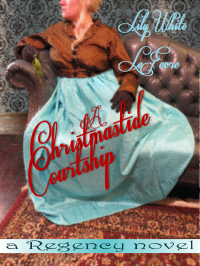This is a companion piece to last month’s line editing post, about the various revisioning passes I make before I get to the line editing. Read it at amwriting site.
______________________________________
Last month I wrote about line editing. One important step (or, rather, a series of steps) exists between finishing a rough draft and tightening via a line edit, and that step is content revision.
My writing mentor used to discuss revision not as a chore but as an opportunity. He told us, “Look at the word itself, revision. Now look at it again and see what else is there: re-vision. It’s a chance to re-envision your work.”
I have always loved that breaking of the word and the concept. Re-visioning sounds so much more…optimistic than revising. The word is an invitation to evaluate what you imagined in the first place and really weigh it against all the other possibilities. Maybe it was the best choice; many times it will be. But if it wasn’t, here’s the chance to get it right the first time. Or the second. Or the third. Revision is not a one-step process.
As with line editing, I find keeping a “hit-list” of areas I know to be problems on hand helps me examine my work from every angle. There are two sections to my revision master list, one focusing on the story and the other focusing on how the story is presented.
Storyboarding
I examine every scene with these questions in mind:
- Does this scene advance the story or character development? This is a yes or no question. The answer is rarely no, because I write from an outline, but if it is no, then I have to decide whether to remove the scene or add to it so that it becomes integral to the whole.
- Is this scene told from the best point of view for story/character development? The best point of view being either the one that will create the most narrative tension or the one which will deliver the most information, depending on the point of the scene. If I got it wrong the first time, it is a relatively easy fix to flip the point of view.
- Does this scene begin and end where it should? Sometimes I cut things off too soon, other times I don’t start them in quite the right place and have to back-track to fill a time gap. Sometimes the bridging works, but sometimes I should have just started the scene earlier and told the events in “real time.”
- Is the timing of this scene clear? It is always clear to me when a scene takes place, but not necessarily to the reader if I don’t properly cue them as to where it is in relation to the end of the previous scene. And do so in a less intrusive way than a clumsy opening like “Three hours later….”
Writing
Unlike the storyboarding list, which is pretty universal, this list is going to change from writer to writer and genre to genre. I developed it for the context of writing historical romance, with some of my known weaknesses as a writer in mind. Your weak spots might be different; your genre needs almost invariably will be.
- Sexual tension/physical awareness – this pass is probably combined with the next one. A lot of romance is built on the sexual tension between two characters. I don’t often get it into a rough draft because I am too focused on the dialogue and the immediacy of the events. Some scenes are naturally tense; others aren’t, and then it’s important to remind the reader of that thread of the plot with at least a moment of awareness in every scene the characters are together.
- Physical grounding – a slightly different issue than the above. I am super-focused on what’s going on inside a character’s head, and I neglect to put in the details of the physical world that “ground” the reader. So I have to go through my dialogue or internal monologue scenes and add references to the world at hand.
- Dialogue – does it sound natural, add in slang from the era. My main goal in drafting dialogue is not to use modern colloquialisms and let my characters talk for themselves. But a specific look at whether they sound plausible, and a bit of flavour from The Dictionary of the Vulgar Tongue is never a bad thing.
- Don’t belabor the point – I overexplain thought processes; minimize it. This comes from approaching my stories from a place of logic. Often a character’s reasoning process is unnecessary, but I draft it in, so then I have to decide if it needs to be there and if not, take it out, and then add back in any details or physical cues that might help the reader understand what the thought was even if it wasn’t spelled out.
- How does the character think about the world? – what I jokingly call the INTJ test. That is my MBTI type, and as it is relatively rare in men and extremely rare in women, I have to make sure that I’m not just writing myself over and over again. The perspective of each character should be subtly (or maybe not at all subtly!) different. In this pass I try to pair them with a friend who has a different way of looking at the world and thinking through situations than I do, and use my knowledge of someone else’s perspective to try and drive that character a little bit further from me but still keep them realistic.
So this is my revising process. What’s yours?



